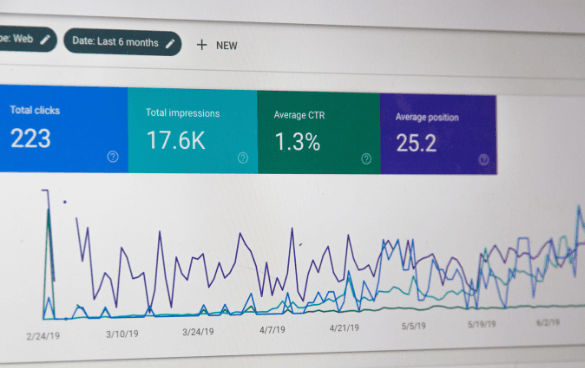Maximizing Your ROI with Remarketing In Google Analytics
Maximizing Your ROI with Remarketing In Google Analytics
Blog Article
Reliable Strategies for Remarketing in Google Analytics
In the realm of electronic advertising and marketing, the world of remarketing in Google Analytics stands as an essential tool for organizations intending to boost their on the internet presence and conversion prices. With critical target market division, tailored remarketing checklists, and appealing ad creatives, services can craft customized projects that resonate with their target market. Nevertheless, real success depends on the capability to continuously improve and optimize these approaches based on efficiency metrics and information insights. By discovering the nuances of dynamic remarketing and leveraging innovative tracking tools, businesses can unlock the full possibility of their remarketing initiatives, resulting in increased brand exposure and consumer interaction.
Target Market Division
Making use of audience division is an essential strategy in optimizing the effectiveness of remarketing projects within Google Analytics. By dividing your target market into unique teams based on their habits, demographics, or rate of interests, you can customize your advertising and marketing messages to be extra appropriate and appealing. This approach allows you to deliver personalized advertisements to details sectors, raising the chance of conversion.

Furthermore, audience division assists you comprehend the varying needs and choices of various client teams, permitting you to craft even more engaging advertisement creatives and deals. This targeted technique not only enhances the efficiency of your remarketing initiatives yet additionally enhances overall campaign efficiency.
Establishing Remarketing Lists
To successfully execute remarketing approaches in Google Analytics, the first step entails developing targeted remarketing listings based upon details target market interactions. Establishing up remarketing listings allows online marketers to segment their web site visitors into various classifications based on their actions, such as pages viewed, items searched for, or activities taken on the website. By defining these sectors, marketing professionals can then produce appropriate and customized ads that target these specific teams, increasing the probability of conversion.
Remarketing lists can be established using different criteria such as page visits, period of go to, details goal completions, or perhaps particular occasions triggered on the web site. This level of personalization makes it possible for online marketers to customize their advertisements to match the interests and preferences of each segmented target market, resulting in greater involvement and conversion prices.
In addition, remarketing listings can likewise be developed based upon information imported from various other sources like CRM systems, enabling for even more exact targeting. By establishing up these targeted remarketing listings, marketing experts can efficiently reach out to potential consumers who have actually already shown rate of interest in their product and services, optimizing the influence of their remarketing campaigns.
Producing Compelling Advertisement Creatives
After segmenting internet site site visitors right into targeted remarketing lists based on particular target market communications, the following crucial step is to craft compelling ad creatives that resonate with each segmented group's rate of interests and preferences. The efficiency of remarketing projects heavily depends on the capability of these ad creatives to catch the interest of the audience and drive them to take the preferred action.
To produce compelling ad creatives, it is necessary to comprehend the distinct qualities of each segmented group (What Is “Remarketing” In Google Analytics?). Tailoring the messaging, visuals, and provides to align with the interests and preferences of the audience can significantly increase the chances of conversion. Utilizing dynamic ads that immediately readjust material based on the customer's actions can likewise boost the customization of the advertisement experience

Monitoring Performance and Optimization
Reliable surveillance of project efficiency and continual optimization are crucial aspects of effective remarketing methods in Google Analytics. To guarantee the effectiveness of remarketing projects, marketing professionals need to regularly track essential efficiency metrics such as click-through rates, conversion rates, and return on ad spend. By monitoring these metrics, marketing experts can acquire important understandings into the efficiency of their projects and recognize areas for enhancement.
In Google Analytics, online marketers can leverage devices like conversion tracking and audience division to evaluate the performance of their remarketing projects. Conversion tracking allows marketers to track specific activities that customers take after clicking a remarketing ad, offering beneficial data on the performance you could try this out of the campaign in driving desired end results. Target market segmentation, on the other hand, enables marketing professionals to divide their target market right into different sectors based on numerous criteria such as demographics, habits, and interests, permitting even more targeted and personalized remarketing efforts.
Continual optimization is important for maximizing the effect of remarketing projects. Marketers must use A/B testing to explore various ad creatives, messaging, and targeting strategies to determine one of the most reliable approaches. By on a regular basis analyzing campaign performance data and making data-driven optimizations, marketing experts can ensure that their remarketing projects are attaining the wanted results and driving conversions effectively.
Leveraging Dynamic Remarketing
Using vibrant remarketing can dramatically enhance the importance and influence of targeted view website advertisements in Google Analytics. This advanced technique allows advertisers to show customized ads to individuals that have actually formerly seen their web site or utilized their mobile application. By dynamically showing items or solutions that the individuals have shown interest in, dynamic remarketing assists to keep the brand fresh in their minds and encourages them to return to complete a purchase.

Moreover, dynamic remarketing projects can be automated and maximized in real-time based upon efficiency data, guaranteeing that the ads continue to be efficient and relevant. By leveraging dynamic remarketing in Google Analytics, marketers can develop a lot more impactful and targeted ad campaign that resonate with their target market and drive outcomes.
Final Thought
To conclude, effective remarketing approaches in Google Analytics include audience segmentation, targeted remarketing checklists, compelling advertisement creatives, efficiency tracking, and dynamic remarketing. By concentrating on customized ads, data evaluation, and continual optimization, services can raise conversion rates and drive engagement efficiently. Leveraging devices like conversion tracking ensures that advertisements stay tailored and appropriate, leading to total success in remarketing initiatives.
Through critical audience division, tailored remarketing checklists, and appealing advertisement creatives, companies can craft personalized projects that resonate with their target audience. Using dynamic advertisements that automatically change content based on the individual's behavior can likewise enhance the customization of the ad experience.
Conversion monitoring allows marketing professionals to track specific activities that users take after clicking on a remarketing ad, giving important information on the effectiveness of the campaign in driving preferred end results.Utilizing vibrant remarketing can significantly improve the relevance and effect of targeted advertisements in Google Analytics - What Is “Remarketing” In Google Analytics?.In conclusion, efficient remarketing approaches in Google Analytics involve target market click for info division, targeted remarketing lists, compelling advertisement creatives, efficiency surveillance, and dynamic remarketing
Report this page